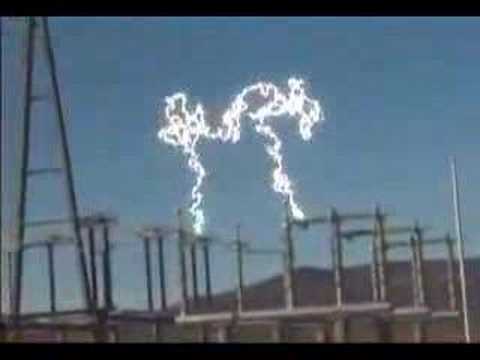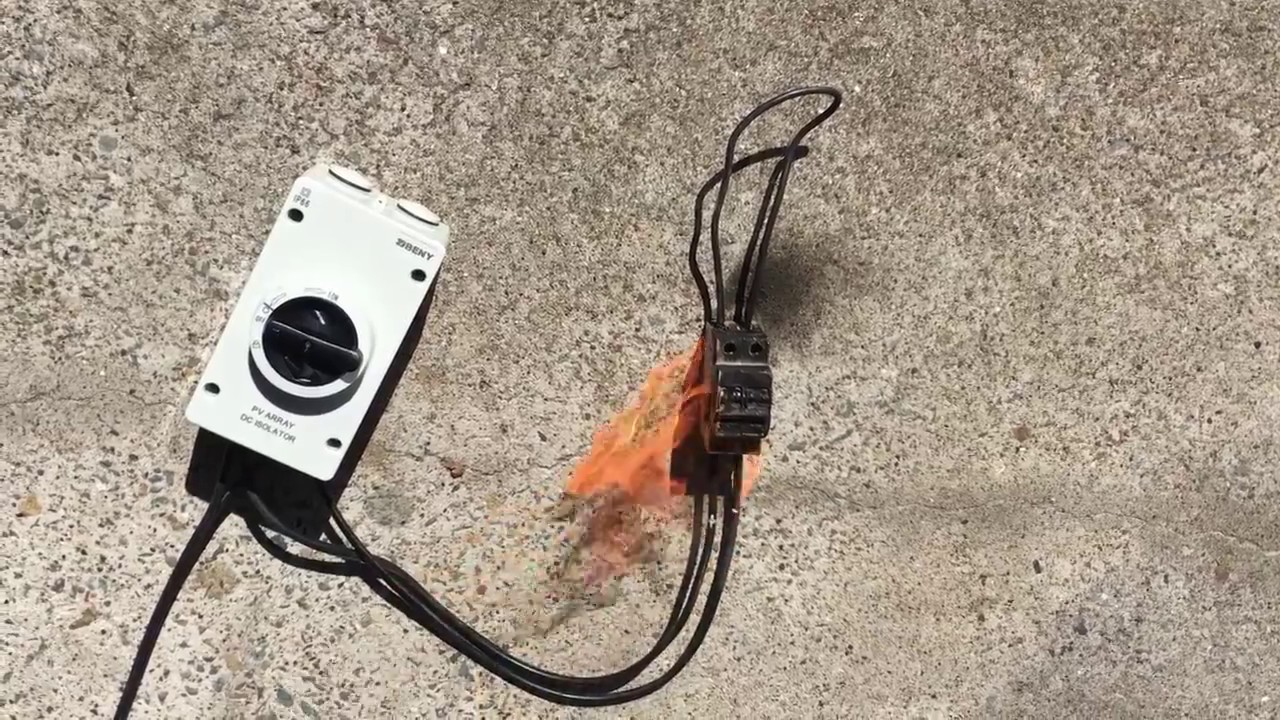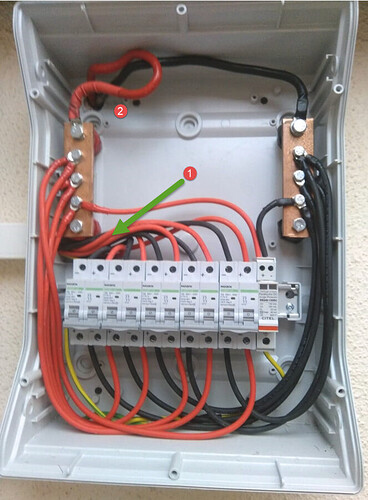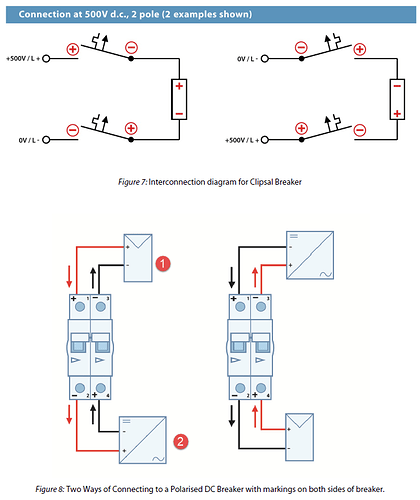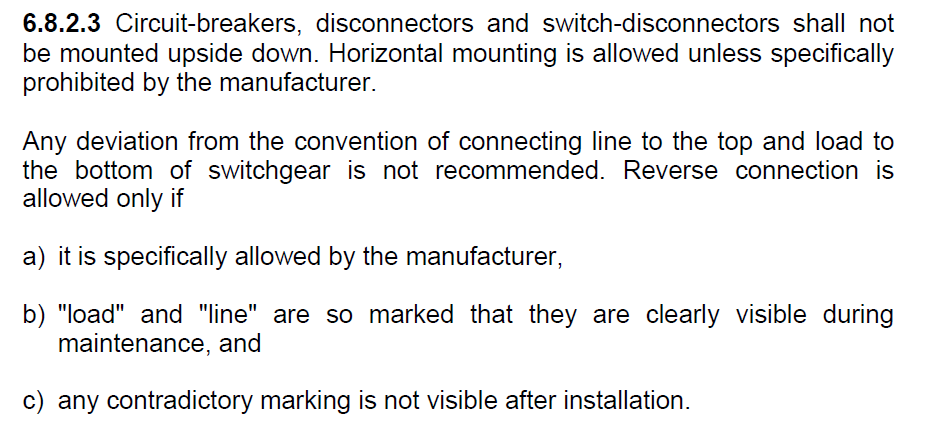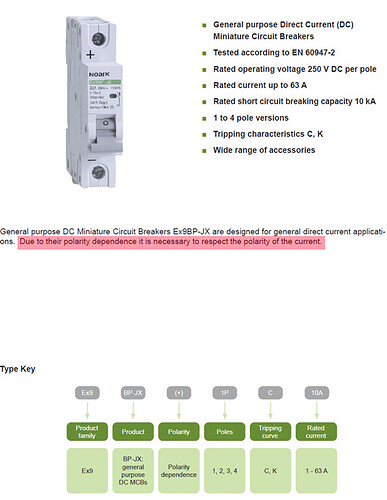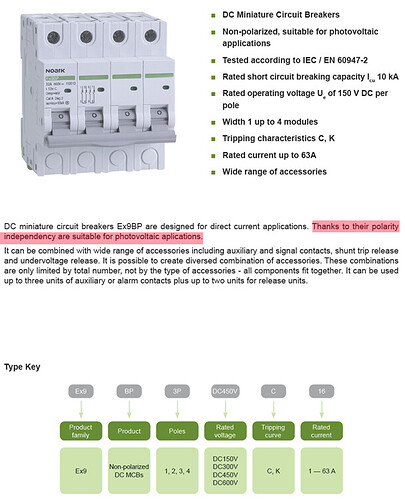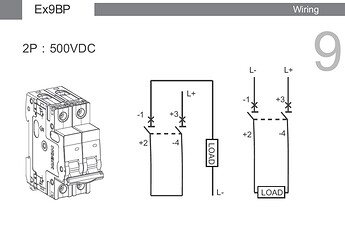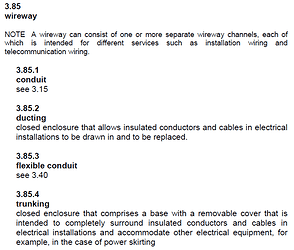If you do that you will have to switch it down to turn it on which is unconventional and therefore a safety risk. If its not contra to ZA regs it should be.
Edit: Have you seen a device called a “Jacob’s ladder”?
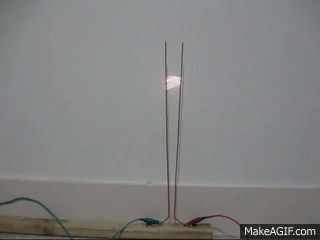
This breaks an arc, but it wouldn’t work upside-down. I would think that even though magnetism is used in an MCB to lengthen the arc. That arc must be provided an area within that MCB in order to be able to lengthen and eventually break. If we consider the operation of a Jacob’s ladder the area for arc expansion in an MCB will be away and upwards from the break.
The arc won’t travel downwards because heat rises. So I think it is likely that the orientation of MCB will still affect its ability to function and incorporated into the MCB’s design.
No, I think the polarity from PV to MPPT is correct, but the breaker is the wrong way round. DC breakers have a magnetic cage to quench the arc, and if you wire it the wrong way round, it pushes it out instead of pulling it in and it actually causes a fire.
So you have to think as to which side is MORE positive, and that needs to go to the + terminal. The PV + is more positive than the battery +, so the battery positive connects to a terminal marked with a minus (even if that feels weird). On the other end, the battery negative is more positive than the PV negative, so the battery negative actually connects to a terminal marked with a plus. As long as you get that right, it doesn’t really matter which side (top or bottom) you put which.
OK for AC use. I have some of them that are DC-rated to 55V per contact. They get hot and they derate and trip way too early. Which is not abnormal, it’s a thermal breaker after all, but if you have three of them in a row, it causes issues. I would still go with the Noark instead.
Edit: In the context here (PV-inverter, not battery), just replace battery with PV-inverter and the rest is the same.
Just to concentrate the mind.
This is not fault current.
2 Likes
And to add to that, along with what Phil said about not mucking with the “live at the top” convention, and heat traveling upwards… then you don’t have to fit the breaker upside down and you don’t have to offend your OCD sensibilities 
Also, Noark does make a breaker that is not polarised, which is IMHO a lot safer. You cannot get it wrong.
See also this for example:
Wow, thats scary.
I cant find mention of it, do you know if the 1P Gewiss breakers are polarized? I suspect not but after seeing that, confirmation wouldnt hurt.
The ones I have are not polarised. They don’t even have magnetic cages. They are only rated for 55V per contact, so they can get away with it.
Ok, you guys are scaring the dinges out of me … this Combiner Box was done by a professional solar installer.
If I “understand” what you guys are typing, am a picture person, then this has then been incorrectly installed?
- From panels
- To MPPT
All breakers was OFF at when the picture was taken.
But then … after the “panic” left my stomach …
Seems it is correct … Correct?
1 Like
Yours are fine like that… Polarity is correct and they work perfectly like that.
I switch them under full load with every site I commission and they work perfectly.
1 Like
There’s a red wire coming in at the top of the breaker that turns black at the bottom, and the black wire at the top turns red at the bottom. That’s not the wrong way round, that’s just plain wrong (as @Whatyamacallit pointed out).
I don’t know which of the terminals on the Solis are + and which are -, so the polarity might be correct if the black wire is connected to + on the Solis and the red wire to the - terminal on the Solis. It’s not legal though.
Circuit diagram for the breaker in question:
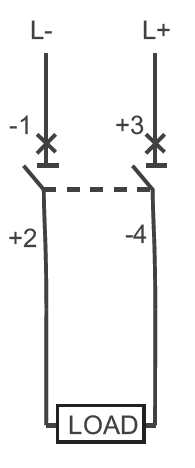
1 Like
You’re not allowed to mount circuit breakers upside down, but you are allowed to switch “load” and “line” if they are clearly marked. I fully agree with you that it is to be avoided. I would not do it.
Here’s the relevant section from SANS 10142:
1 Like
Just FYI, in terms of “+” and “-” misprints etc. on the Noarks.
They seem to produce what they consider “general use DC” breakers - these are polarity dependent and have + & - signs.
They also produce PV focussed breakers which are not polarity dependent.
DC - general:
DC - PV:
DC - general install
Lots of interesting info when one reads through catalogues
General catalogue
PV catalogue - look through the first couple of pages, the rationale behind non-polarised breakers is fleshed out more there (from about p.14).
And for those with OCD, turning these things upside down is maybe questionable?.. I have seen ABB specify acceptable install positions that vary from vertical/upright in their catalogues/install info (and it is not uniform across even the same product family), so if it is not specifically stated I think upright should remain the install position if you want to rely on its design to do what is should?
I wanted to get those, but couldn’t find anyone that sells them. I would guess it’s because they’re more expensive and there isn’t enough demand for them… or perhaps I just didn’t look hard enough.
It’s specifically prohibited in the SANS regulations.
2 Likes
my question is more for the people who may fiddle with things after getting COC etc.
One question:
the trunking below the solis - is it allowed to have the AC and DC share the trunking? (@JacoDeJongh , @PierreJ … or anyone else…)
No, but if he uses Round surfix it is allowed. Then its seen as the AC running in its own"Wireway" within a trunking. I am not sure if twin and earth flat can be used in the same way. If i do run them together I use round surfix only. Or I put my AC in a Smaller trunking within the bigger trunking. I then run my DC loose within the Bigger trunking.
1 Like
I saw the flat twin and earth next to the DC cables and almost commented on it, but I wasn’t sure of the interpretation of the regulations. If you go strictly by the words of the text then it would seem that it is not allowed:
Where a wireway is defined as:
However, there’s a lot of leeway given to the installation of PVC insulated multicore cables elsewhere in the text (section 6.3.6), so it doesn’t seem entirely unreasonable to me to consider the outer sheath of Surfix as being “its own conduit”.
I reckon that if it is generally accepted for Surfix then it should be for flat twin and earth too. I won’t test any of this theory though. I don’t want to give anyone an excuse to fail my installations, so I just keep the AC and DC sides entirely separate.
Sonopsolar sells the ex9bp-n which is not polarity sensitive.
My bad… you are absolutely right. Probably got confused by the very same thing we are discussing.
The product images on their webpage are wrong. They might have sold the non-polarized version at some point, but I bought several Noark breakers from them over the past year and they all ended up being the polarized version (to my disappointment).
If you check out the datasheet under “Download Files” you’ll find it is actually the Ex9BP-JX they are currently selling.
OK… that is unfortunate. I didn’t know, thanks for the information!

